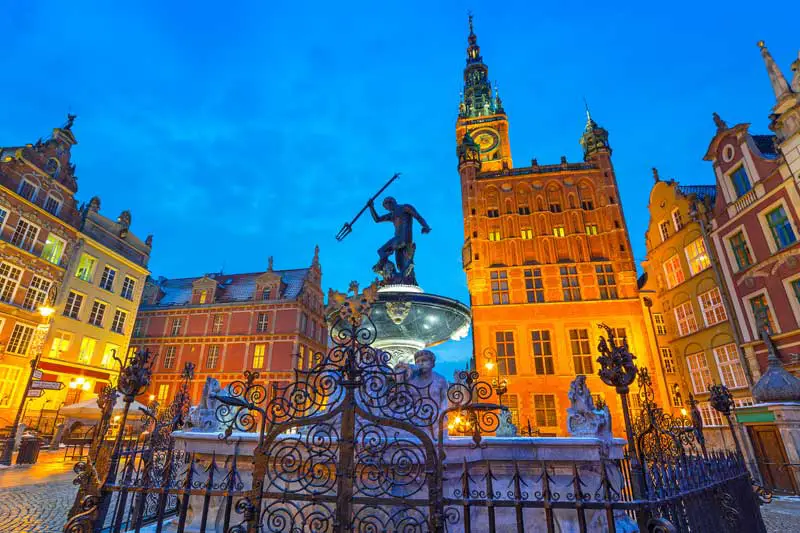Think Gdansk and think home of Solidarity: the labor union that
struck a shipyard and started a movement that eventually led to the
fall of Communism in Poland and elsewhere in Eastern Europe.
Over the years, Gdansk was dominated by Prussians and Hanseatics, and
was one of the most important ports in the Baltics. For a time after
World War I, the city was known as Danzig. The Nazis were here for five
years during World War II and battles to liberate the city in 1945
resulted in its near total destruction. Miraculously, the historic
center, known as Main City, was rebuilt during the post-war Soviet era
with great reverence – literally brick by brick – and today it is a
lovely architectural venue. Entering the historical quarter is like
walking back into history – in this case, a medieval merchant
settlement. Gdansk was once Europe’s major center for grain trade.
Huge stone towers are located at the entrances to the city. Solidarity
leader Lech Walesa’s offices are in the tower known as the Green Gate
(there’s a plaque out front) and the main square is full of colorful,
Dutch Renaissance-style mansions. St. Mary’s Church in Main City is
reputedly the largest brick church in the world and can hold 25,000 for
services. The seven-story Great Mill on the waterfront (on Motlawa
River) was once the largest mill in medieval Europe. It’s amazing to
stand on Long Street (ul Dluga) and imagine that what you see now was
all rubble after the war. More recently, after the shipyard strikes in
the 1970’s and 1980, and a 1980 agreement, 10 million Poles (out of
about 36 million at the time) joined Solidarity, and Walesa went on to
become the first democratically elected president of modern Poland.
Although Gdansk is not the capital of Poland (that is Warsaw to the
southeast), it is Poland’s largest northern city – origins dating back
to the 10th century – with a population of 465,000. Gdansk, together
with Gydnia and the resort town of Sopot, is known as the Tricity.
Gydnia, where the big ships dock, is a former fishing village turned
major seaport. It was a Nazi stronghold during the war (a major Naval
port where Hitler once planned to build 100 subs before his plans were
scuttled by major bombing by Allied Forces and the end of the war).
Today it’s an industrial and naval town. Sopot, located between Gydnia
and Gdansk, is a resort town popular with Poland’s jet set.
Poland: Travel Tips
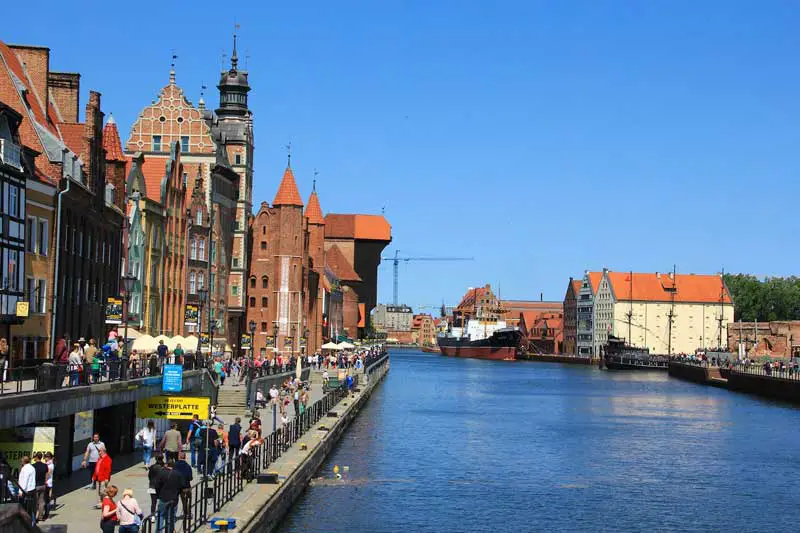
Attractions and Activities
The city has some buildings surviving from the time of the Hanseatic
League. Most tourist attractions are located along or near Ulica Dluga
(Long Street) and Dlugi Targ (Long Market), a pedestrian thoroughfare
surrounded by buildings reconstructed in historical (primarily during
the 17th century) style and flanked at both ends by elaborate city
gates. This part of the city is sometimes referred to as the Royal
Road, since it was once the former path of processions for visiting
kings.
In the National Museum you can see a collection of paintings and other
crafts. The most famous artwork on show is The Last Judgment by Hans
Memling. The life of Gdansk’s citizens is displayed at exhibitions in
the Gdansk History Museum, the Artus Court and the Uphagen House, where
you can admire the wealth and splendour of the apartments of Gdansk’s
patricians. If you are interested in the history of maritime culture,
come to the Central Maritime Museum.
The Wrzeszcz District has an atmosphere from the late 19th and early
20th century, including eclectic houses and Vienna Secession-style
villas. Sights worth seeing include a 19th century brewery and a
settlement of workers’ cottages. Gdansk is the setting for some of the
literary works of Nobel laureate Gunter Grass, who was born and lived
here as a child. Oliwa, site of the International Organ Festival, is
famous for its cathedral, which has an original Rococo organ.
Surrounding area
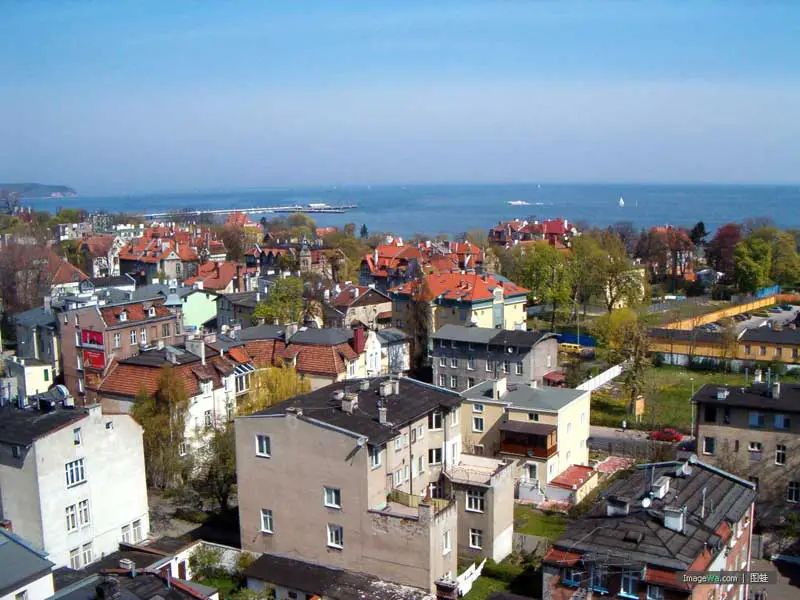
Sopot
Gdansk’s immediate northern neighbour, Sopot is the smallest of the
Tricity municipalities, yet packed with interesting sites, including a
lively city centre, excellent beaches, stately hotels, and the longest
pier in Europe. Sopot is a seaside beach resort and spa town in
Pomeranian Voivodeship, and is among one of Poland’s most famous and
beloved seaside communities. Nearby are the sea resort and port of
Gdynia with the biggest Baltic port, and the sea resort of Puck.
Vistula Bay is home to the sea resort and medieval town of Frombork
with the grave of Nicolaus Copernicus, the medieval town of Elblag, and
the sea resort Kadyny with one of the best European studs. Dansk Bay
has a beautiful old town and the biggest gothic brick church in the
world. Hel Peninsula has the sea resorts of Chalupy, Jastarnia, Jurata
and Hel. The Kashubian Coast has the biggest dunes in Europe at
Slowinski National Park and the sea resorts of Rowy, Keba, Jastrzebia
Gora, Rozewie and Wladyslawowo.
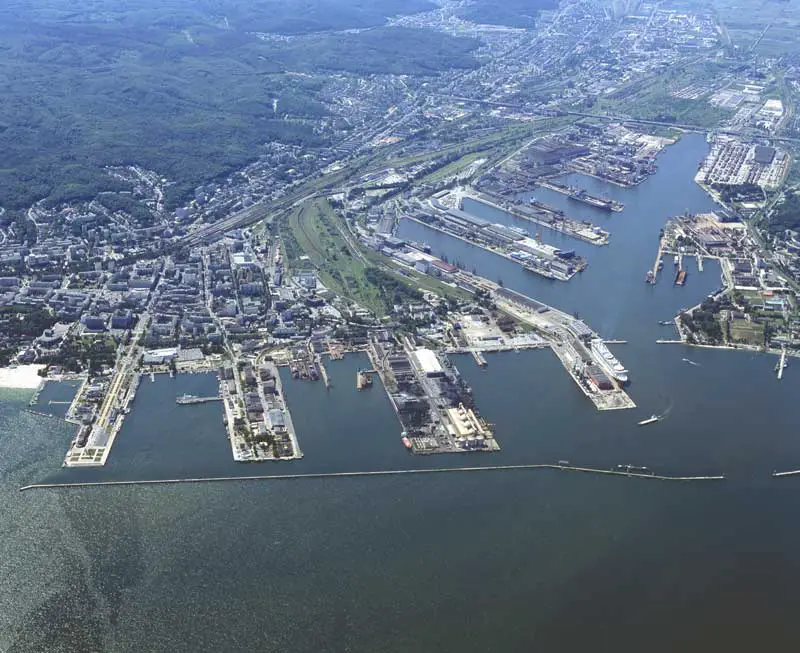
Gdynia
Gdynia is a port city in northern Poland. Gdynia, together with
nearby Gdansk and Sopot are often referred as Tricity. Gdynia was first
mentioned in the 13th century as a fishing village. Its career began
after World War I, when it became Poland´s main harbour and the
big sea port at the Baltic Sea, which it still is. Gdynia is one of the
youngest and modern cities in Poland. In the early 1900s Gdynia was a
little village, but after WW1 and establishing the Free City of Gdansk,
the Polish Government decided to build a deep-sea port. Construction
began in 1921. The city rose fast in the 1920s and 1930s, so
architecture and planning reflect European trends of the day –
Modernism. The city continues to grow to this day. Today, Gdynia is a
modern city with a population of a quarter-million and is the second
major polish port in the Baltic Sea after Gdansk. Gdynia is 23 mins by
train from Gdansk.
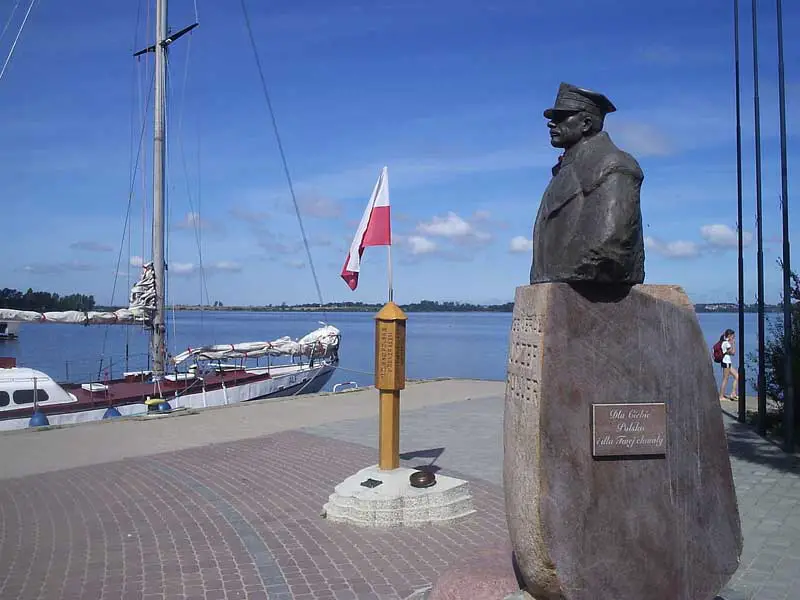
Puck
Located near the foot of the Hel Peninsula north of Gdansk, Puck is
a relaxed, ancient coastal town of beaches and a photogenic marina. It
is in Gdansk Pomerania on the south coast of the Baltic Sea (Bay of
Puck). The settlement became a marketplace and a seaport as early as
the 7th century. Puck is characterized by the maritime climate, clean
water, clean, full of scent of salty air, as well as a sandy beach with
guarded swimming areas. For several years, enthusiasts and fans of
sails, windsurfing and other water sports have been provided with the
possibilities to use the one of the best water reservoirs in the
central-eastern Europe, which is undoubtedly the Bay of Puck. The
European and World Championships held annually in various classes of
sailing and windsurfing confirm this.
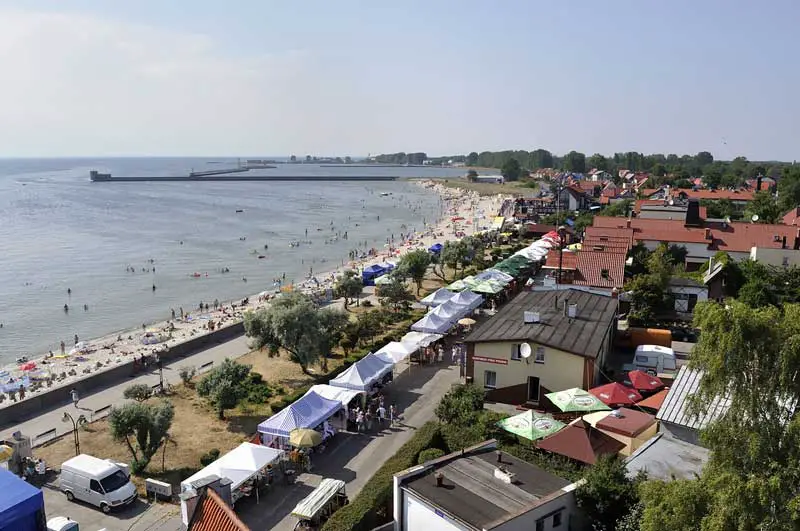
Hel
Hel is a popular location for city dwellers in the Tricity to escape
to, located around 100 km from Gdansk on its similarly-named peninsula.
Famous for its resorts, beaches, bars and campers, Hel can be reached
by road, rail, or alternatively by ferry across the Gulf of Gdansk. It
is surrounded by the sea from all sides beside the peninsula and
therefore a perfect water sport centre. The only way on land you can
take is along the peninsula. The city is pretty small so you can get on
foot everywhere. The main road is the Ulica Wiejska with a lot of
cafes, bars and souvenir shops. Its fine buildings are from the 19th
and early 20th century. The south boulevard leads from the old military
harbour to the new harbour, where tourist ships leave for a trip on the
sea. Hel is 2 hrs 25 mins by train from Gdansk.
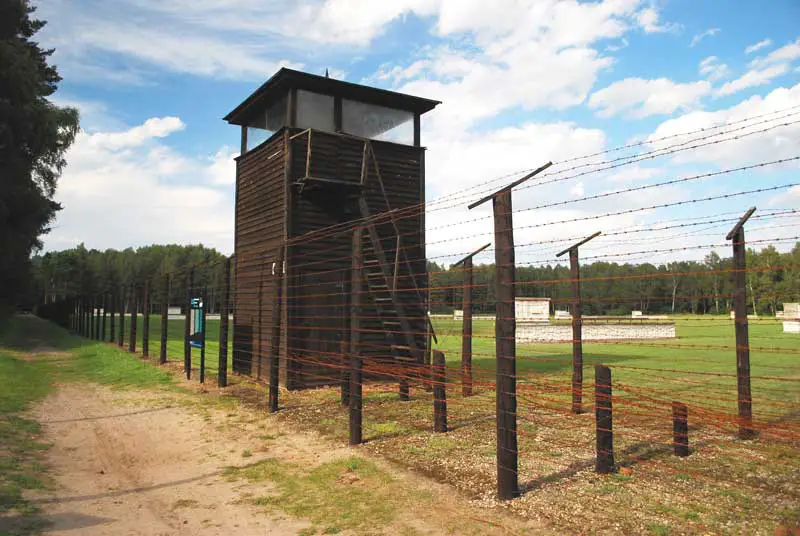
Sztutowo
Sztutowo is situated just east of the city near the Vistula Split,
once it was famous only as the birthplace of the German philosopher
Arthur Schopenhauer, but unfortunately that was to change. Today it is
known as the site of the Nazi Stutthof concentration camp, the first
concentration camp to be built outside Germany. During World War II, it
was a major centre for the Nazi Holocaust against Jews and ethnic
Slavs. The Stutthof concentration camp is the reason to go here, and it
is the closest destination for visitors to the Gdansk area who wish to
experience a concentration camp. The very peaceful and quiet setting of
the camp makes it hard at first to comprehend the horrors that took
place here, despite the barbed wire and the watchtowers. However, as
you enter the barracks and see the pile of shoes from the victims and
the exhibitions describing the efficiency and brutality of the Nazi
killers, the reality of what this place was built for starts to impact
the senses. Sztutowo is 1 hr by a combination of train and taxi from
Gdansk.
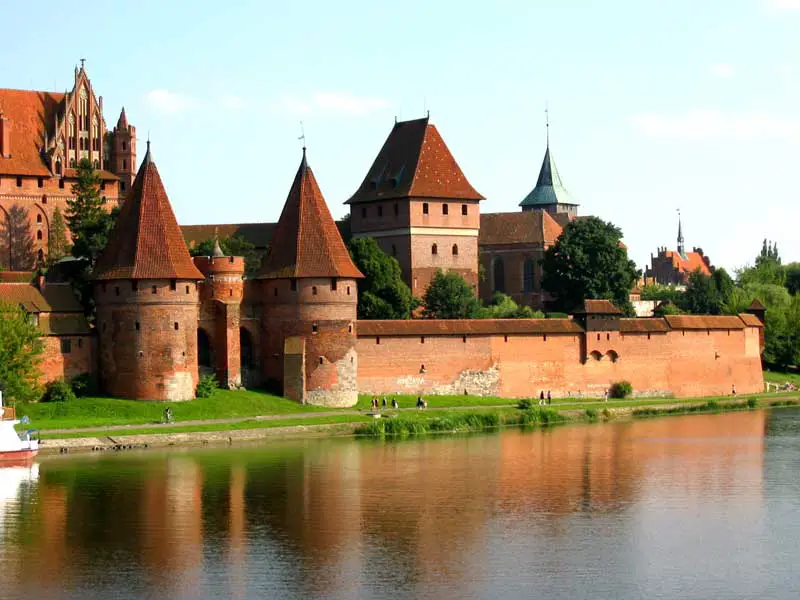
Malbork
Malbork is a town in northern Poland in the Zulawy region. The town
(named Marienburg in German and Malborg or Malbork in Polish) was built
in Prussia around the fortress Ordensburg Marienburg, which was founded
in 1274 on the east bank of the river Nogat by the Teutonic Knights.
The main attraction is Malbork Castlek, the most complete and elaborate
example of the Gothic brick castle complex in the characteristic and
unique style of the Teutonic Order. The spectacular fortress represents
the phenomenon of the monastic state in Prussia, founded in the 13th
century and developed in the 14th century by the German communities of
military monks who carried out crusades against the pagan Prussians on
the south Baltic coast.
In early 1945, Marienburg was the scene of fierce battles by the
Nazis with the Red Army and was almost completely destroyed. Old Town
in Malbork was not rebuilt; instead the bricks from its ruins were used
to rebuild the oldest sections of Warsaw and Gdansk. As a result, with
the exception of the Old Town Hall, two city gates and St. John’s
church, no pre-World War II buildings remain in the Old Town area. In
place of the old town, a housing estate was built in the 1960s. Malbork
is 29 mins by train from Gdansk.
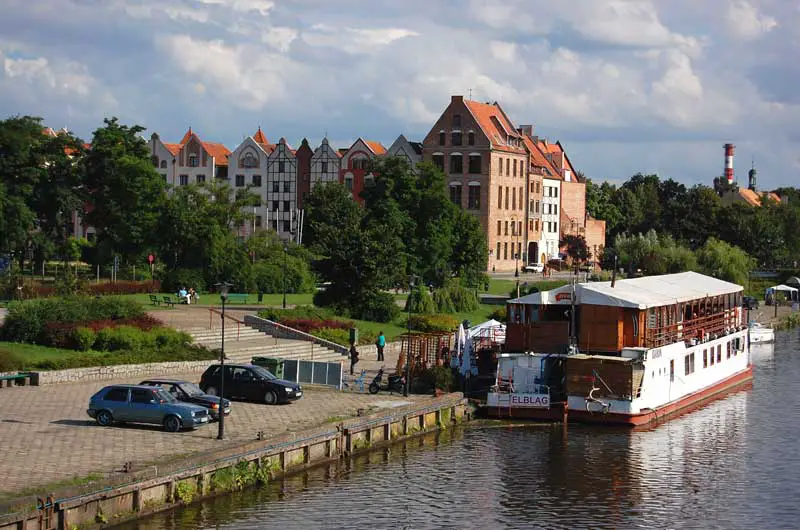
Elblag
Elblag, located in nearby Warmia-Masuria 60 km to the east, is an
historical city. Largely destroyed in World War II, Elblag’s Old Town
has been meticulously reconstructed, a process that continues into the
present day. Visitors to this area are treated to excellent examples of
Renaissance, Baroque and Gothic architecture in this area, though very
few of the buildings are more than 50 years old. With over 130,000
inhabitants, the city is a port on the Elblag River which flows into
the Vistula Lagoon about 10 km to the north, thus giving the city
access to the Baltic Sea via the Strait of Baltiysk. In middle ages it
was an important Hanseatic seaport serving the Vistula River bay on the
early medieval Baltic Sea trade routes. Elblag is 1 hr 20 mins by train
from Gdansk.
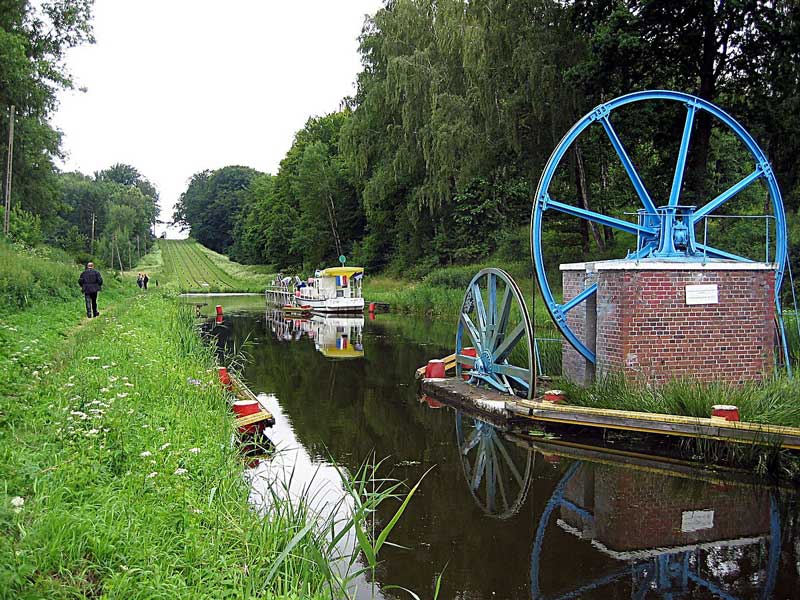
The Elblag Canal, which flows through Elblag, was considered as one
of the seven wonders of Poland and has found itself on a list of unique
technical monuments. This world class example of water technology links
the western Mazurian lakes with the Vistula Lagoon and is today a
popular tourist route. The canal, built between 1844 and 1881,
established a trade route between East Prussia and the Baltic Sea. The
originality of this waterway is the way that it overcomes the
difference in levels totalling nearly 100m – with the help of
locks and inclines. The latter have an arrangement of rails with water
driven pulling mechanisms. In five locations, due to the difference in
level, ships are dragged by ropes over the rails on a specially
designed cradle. After World War II, the Canal was cleared of debris
and tourist cruises were resumed.
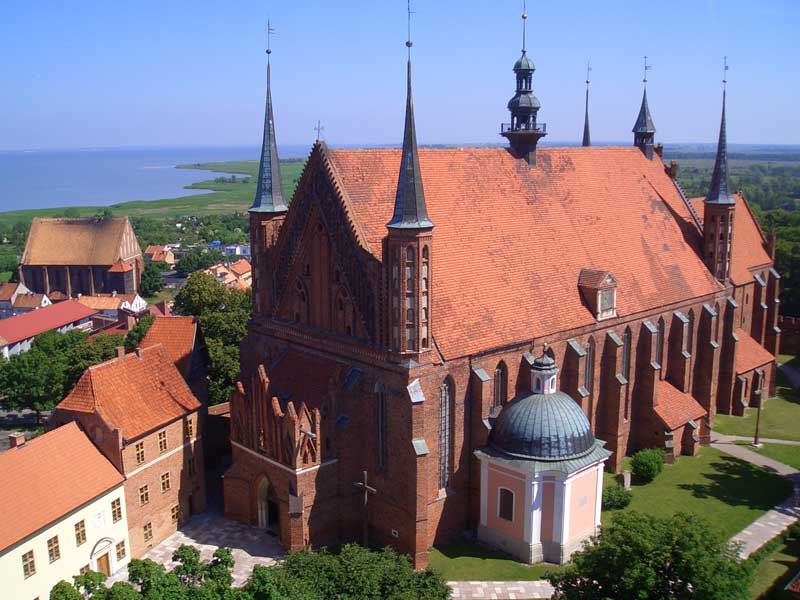
Frombork
Frombork is a seaside medieval town near the Russian border 89 km
east of Gdansk. Frombork is often associated with the Polish astronomer
Nicolaus Copernicus, who extensively lived and worked in the town. Once
a Medieval stronghold, Cathedral Hill is the most interesting part of
the town. The oldest building is the monumental brick cathedral
surrounded by defensive walls and the Bishop’s Palace (14th c)
which today houses the Copernicus Museum. The hill offers a sweeping
view over the Vistula Lagoon and Sandbar. Frombork is today an
important sailing and ice-boating centre. An international festival of
organ music is held here every year. From the local port you can go for
a cruise on the Lagoon or have a trip on a ship or hydrofoil to Krynica
Morska, Elblag or even Kaliningrad in Russia. Frombork is 1 hr 45 mins
by train from Gdansk.



